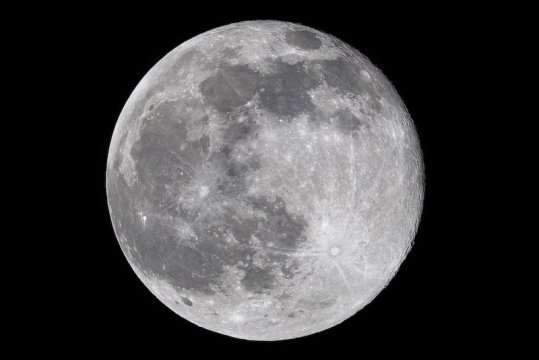Chang'e-5 samples reveal key age of moon rocks

A lunar probe launched by the Chinese space agency recently brought back the first fresh samples of rock and debris from the moon in more than 40 years. Now an international team of scientists -- including an expert from Washington University in St. Louis -- has determined the age of these moon rocks at close to 1.97 billion years old.
"It is the perfect sample to close a 2-billion-year gap," said Brad Jolliff, the Scott Rudolph Professor of Earth and Planetary Sciences in Arts & Sciences and director of the university's McDonnell Center for the Space Sciences. Jolliff is a U.S.-based co-author of an analysis of the new moon rocks led by the Chinese Academy of Geological Sciences, published Oct. 7 in the journal Science.
The age determination is among the first scientific results reported from the successful Chang'e-5 mission, which was designed to collect and return to Earth rocks from some of the youngest volcanic surfaces on the moon.
"Of course, 'young' is relative," Jolliff said. "All of the volcanic rocks collected by Apollo were older than 3 billion years. And all of the young impact craters whose ages have been determined from the analysis of samples are younger than 1 billion years. So the Chang'e-5 samples fill a critical gap."
The gap that Jolliff references is important not only for studying the moon, but also for studying other rocky planets in the solar system.
As a planetary body, the moon itself is about 4.5 billion years old, almost as old as the Earth. But unlike the Earth, the moon doesn't have the erosive or mountain-building processes that tend to erase craters over the years. Scientists have taken advantage of the moon's enduring craters to develop methods of estimating the ages of different regions on its surface, based in part on how pocked by craters the area appears to be.
This study shows that the moon rocks returned by Chang'e-5 are only about 2 billion years old. Knowing the age of these rocks with certainty, scientists are now able to more accurately calibrate their important chronology tools, Jolliff said.
"Planetary scientists know that the more craters on a surface, the older it is; the fewer craters, the younger the surface. That's a nice relative determination," Jolliff said. "But to put absolute age dates on that, one has to have samples from those surfaces."
"The Apollo samples gave us a number of surfaces that we were able to date and correlate with crater densities," Jolliff explained. "This cratering chronology has been extended to other planets -- for example, for Mercury and Mars -- to say that surfaces with a certain density of craters have a certain age."
| Webiste | ScienceDaily- https://www.sciencedaily.com/ |
|---|---|
| Article Name | Chang'e-5 samples reveal key age of moon rocks |
| Source | Washington University in St. Louis |
| You can find the article here | https://www.sciencedaily.com/releases/2021/10/211007145754.htm |